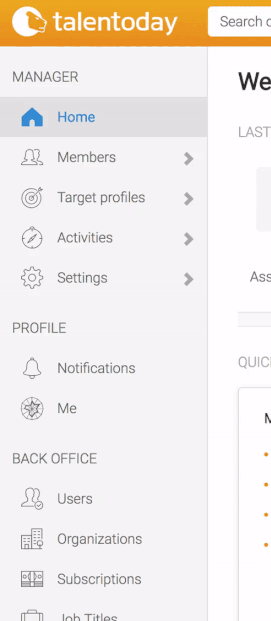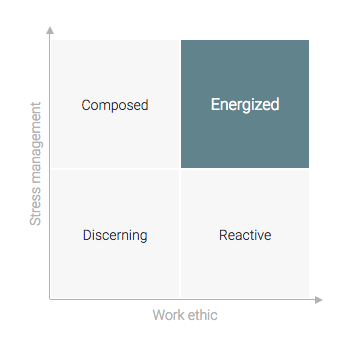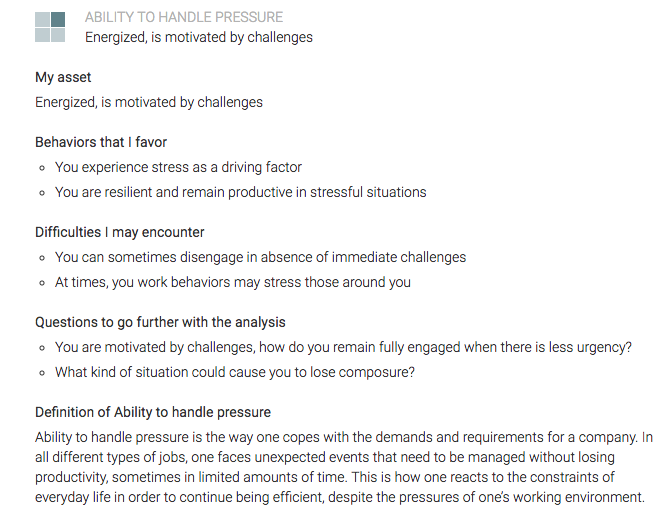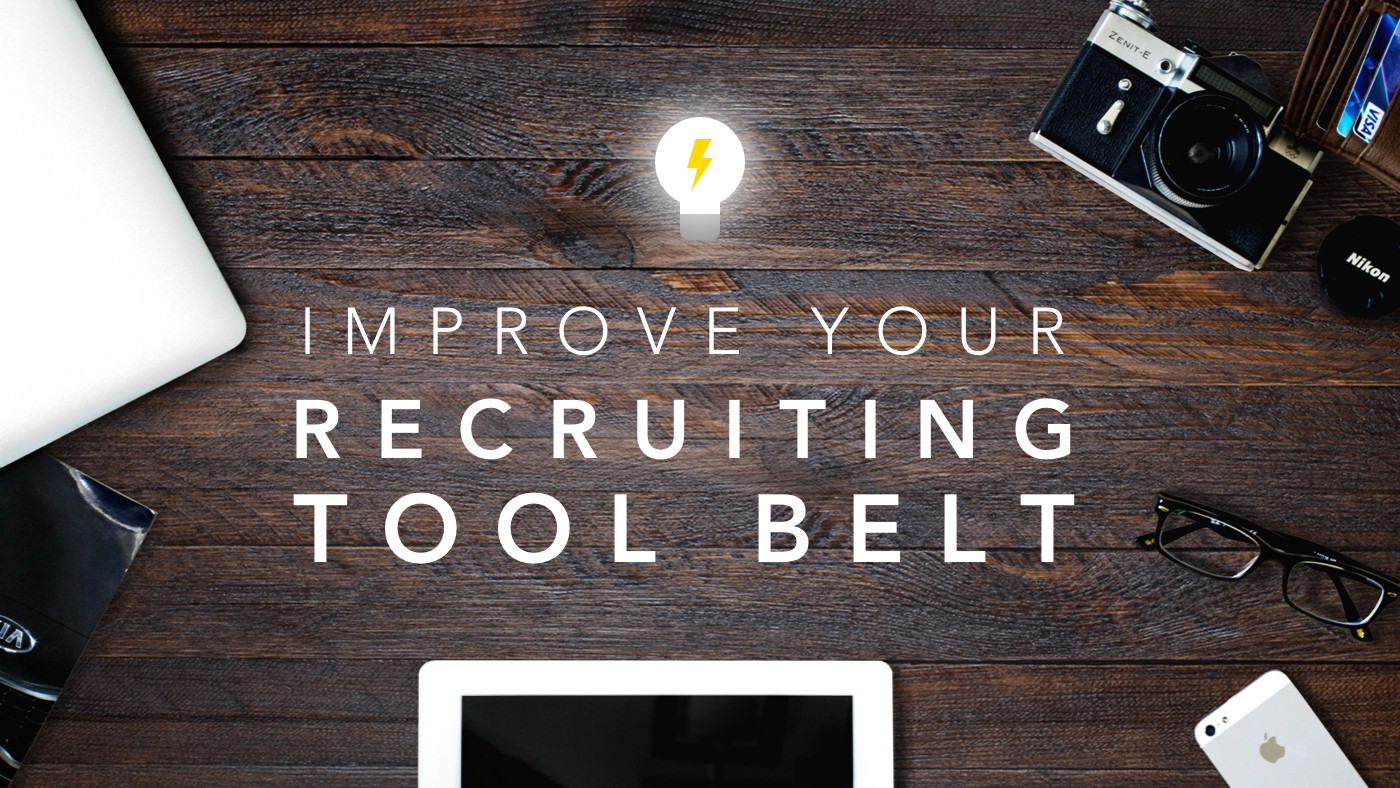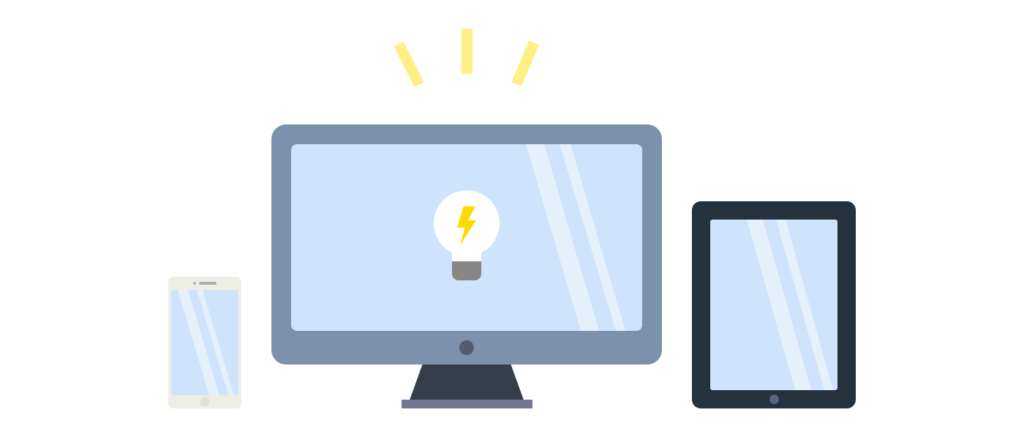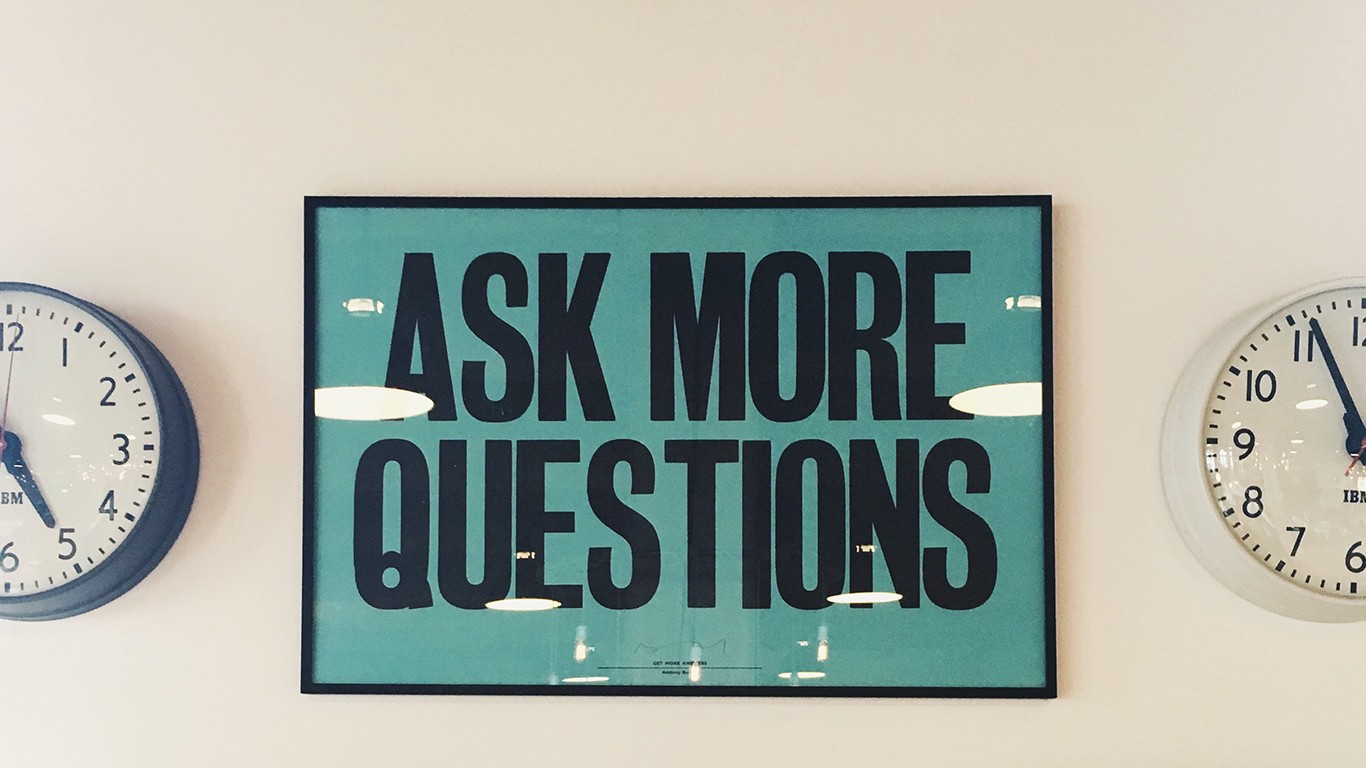A Menu tailored to your needs
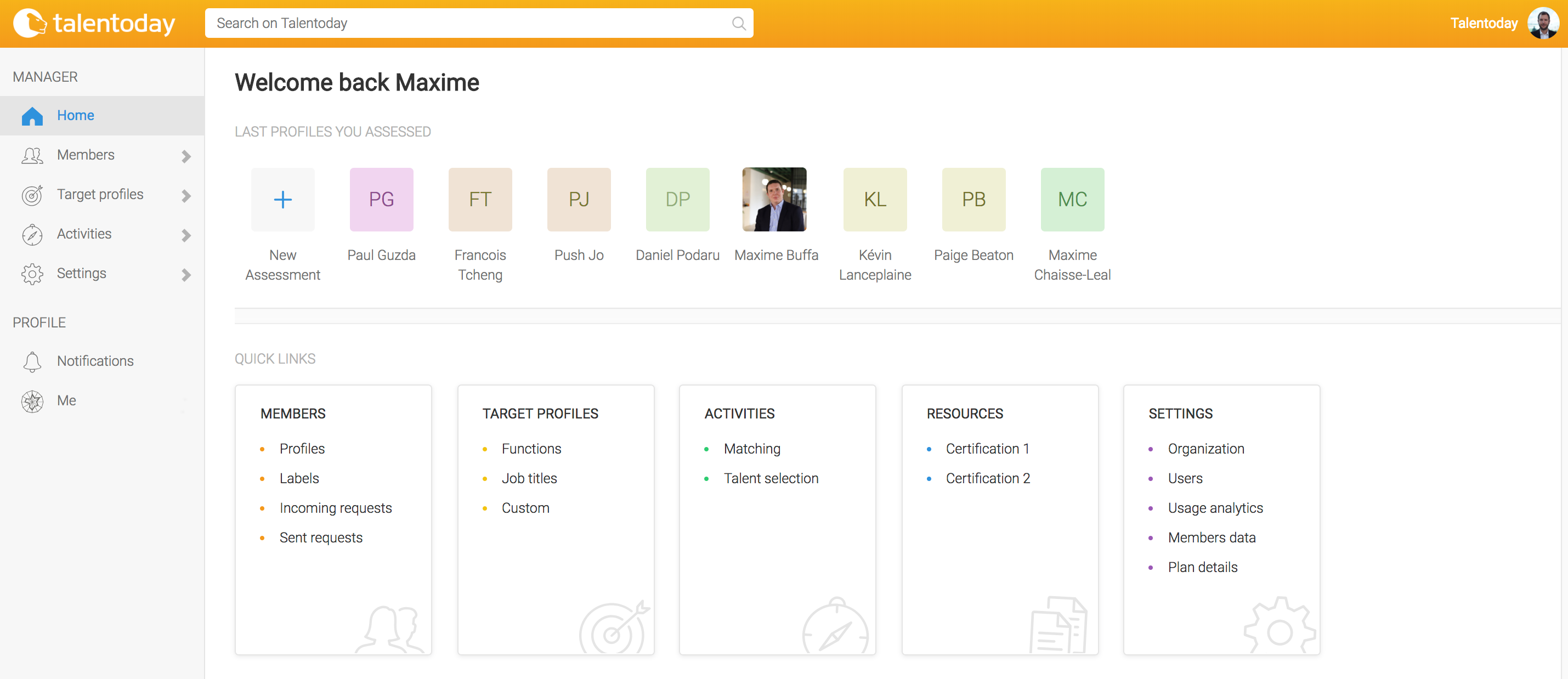
Say hello to your new Talentoday Manager menu ! As we’ve mentioned in our 2018 roadmap, user experience is key for Talentoday. That’s why we are launching a complete redesign of the Talentoday Manager menu, tailored to your specific needs.
In the past we’ve had some feedback that navigating the Talentoday Manager account could be a bit confusing, with features scattered in the menu and sometimes placed in hard-to-reach tabs.
In order to build this new menu, we’ve adopted a user-centric method. Indeed, Talentoday has many uses : recruitment, coaching, career counseling, mobility, talent management… We wanted to provide you an intuitive, task-driven navigation that fits seamlessly with your processes. To this end, we set up a user panel whose feedback and active participation ensured the new menu design would be dedicated to your needs and better showcases its features.
In a nutshell, your Talentoday Manager menu now features a homepage that showcases your last assessments and quick links for every available feature, which are distributed among 4 clusters : Members, Target Profiles, Activities and Settings.
1. Find your bearings
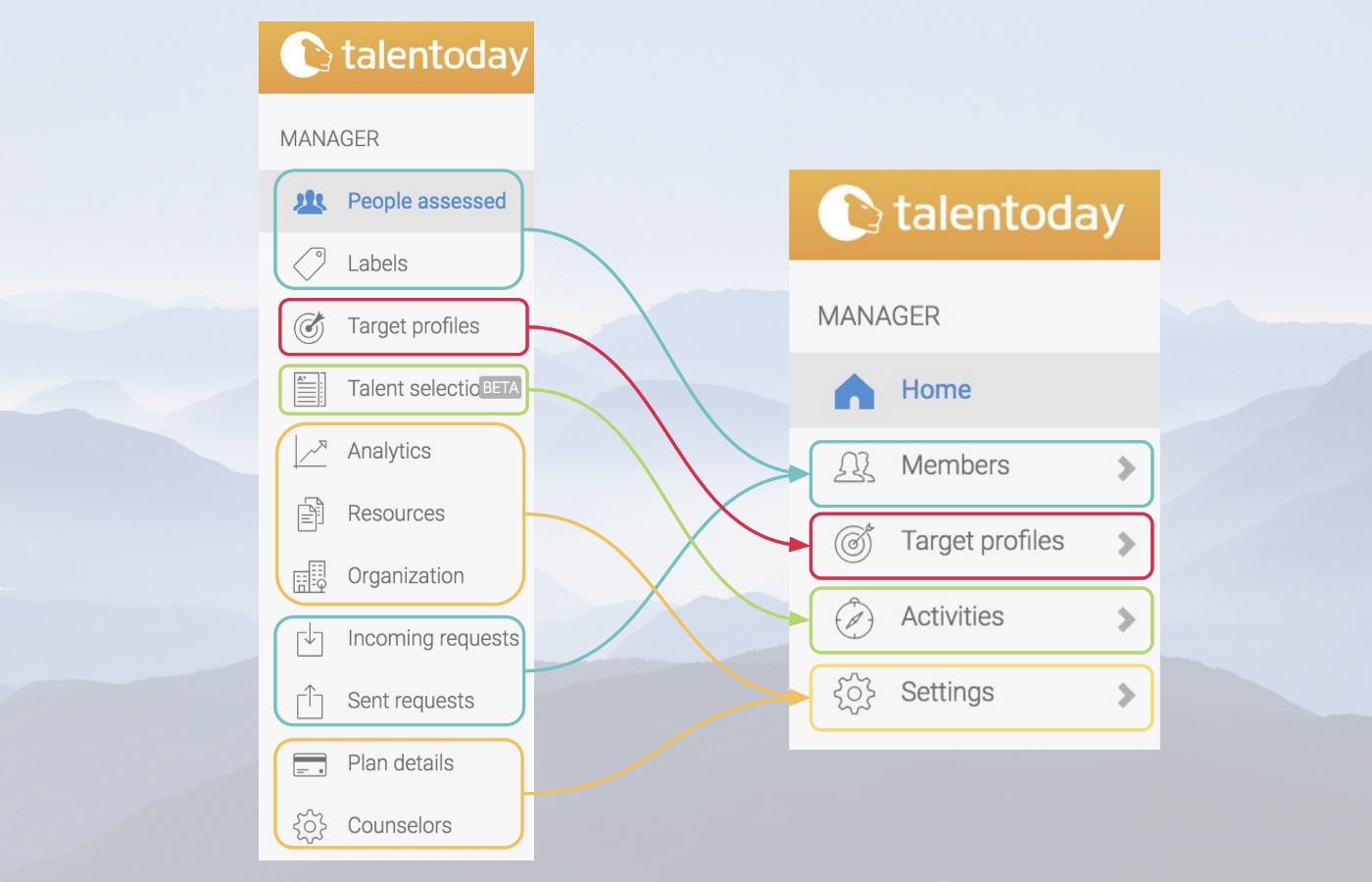
This new navigation bar is meant to reflect your real usage of the Talentoday app. As a result we’ve pooled all our previous features into four categories :
- Members : this is where you’ll see everything pertaining to the candidates you invited on talentoday. Profiles, labels, pending requests.. everything can be tracked there.
- Target profiles : they display the most significant differences relevant to a job, team, organization… that way the Talentoday target profile library and your custom profiles are always at your fingertips.
- Activities : an all new category meant to gather all the features derived from your target profiles and members’ data. This is where you will find our matching and talent selection features.
- Settings : everything related to your resources, usage analytics, organization and plan details can be found there.
2. Get a deeper look
3. New default avatars
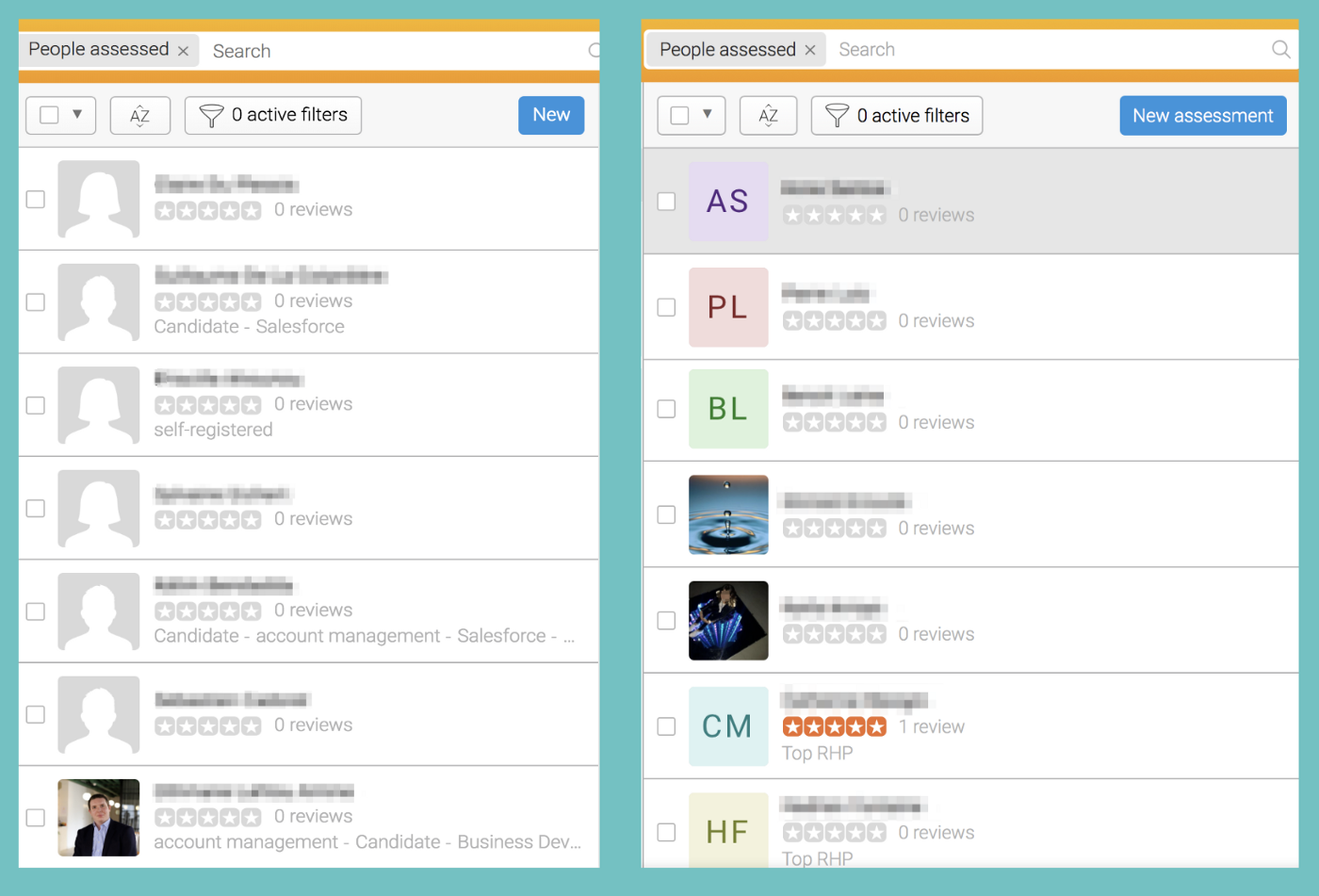
As an additional treat, we’ve decided to shake our default avatars up a bit. People who have registered on our app without adding a profile picture will now be assigned a colourful tile with their initials, instead of a grey silhouette. Enough to brighten up your Members tab!
The navigation and avatar updates are available to anyone with an active license. Renewing or getting your Talentoday Manager license will give you access to all these features and many more in the coming months.
Let us know what you think of these changes, we’d love to hear your feedback. If you have any questions, you can get in touch with us on twitter, facebook or mail.
Talentoday within your application!
In 2017, we saw an increase in the demand for integrating the Talentoday assessment process and results into third-party applications. These apps range from traditional digital platforms in the HR industry, such as HRIS or job boards, to more unconventional ones, such as freelance management software platforms. In this blog post, we will explain how integration is offered for partner apps, and how we can provide a fully unified and seamless experience for their users.
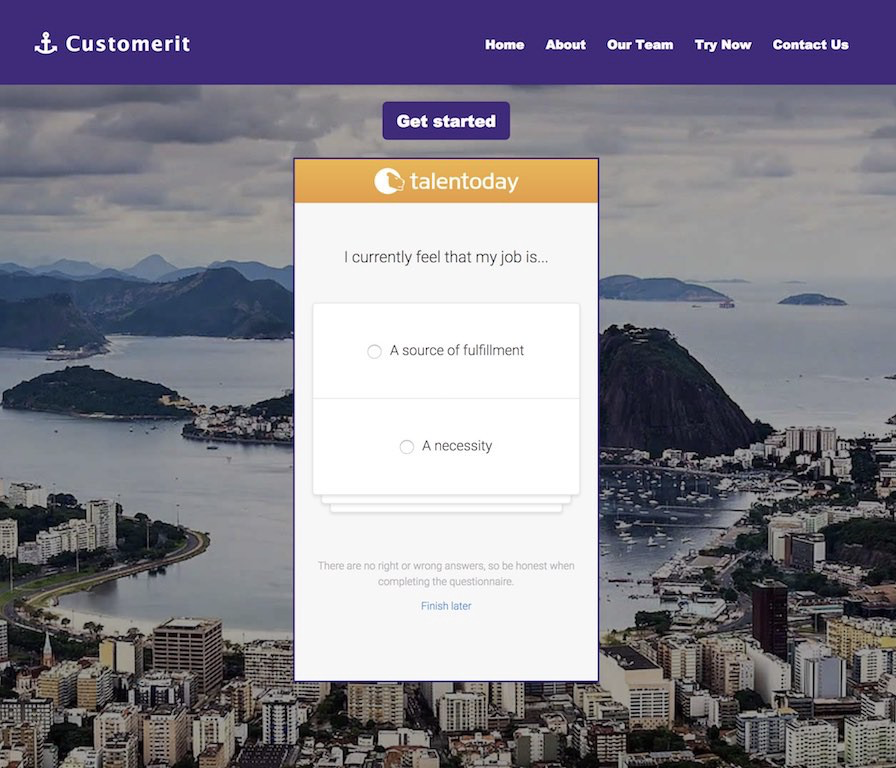
We are proud to announce that you can now easily integrate mYti© questionnaire in partners eco-system. The necessary toolkit has been released, and leverages two new key components:
- The Talentoday Partners API v1.1
- The embedded iFramed light application
The Talentoday Partner API v1.0 was released in January 2018. It has been designed, implemented and documented following the OpenAPI Specification. The purpose of the API is to take psychometric results of the organization’s members, and allow the programmatic distribution from raw data to consolidated reports. The users of this API are designated by the term “partners”, and are made up of existing customers of Talentoday Manager©, as well as partners from other applications where more value can be gained through the integration of a soft-skills component for their users. For example, this API allows you to list the organization’s members (a.k.a. people assessed). Thanks to webhook capabilities, the partner application is notified whenever a member of this organization completes the questionnaire, etc. As mentioned above, the Partner API allows the partner’s ecosystem to retrieve assessment scores and the resulting spider charts for personality traits and motivations, as well as structured PDF reports.
The iFrameable light application is a tactical way to integrate the Talentoday experience into your app. Specifically, the iFrame code is similar to the codes you can find on Youtube’s “embed” sharing code. The light mode application allows a person to sign-up for Talentoday services, and take the psychological assessment without leaving the partner app. Of course, members are still able to access their Talentoday account in the regular application on https://app.talentoday.com.
Leveraging the API will allow the partner to integrate personality results or any related material, such as spider charts, reports, etc. into their own web app, providing their users with a 100% integrated Talentoday experience.
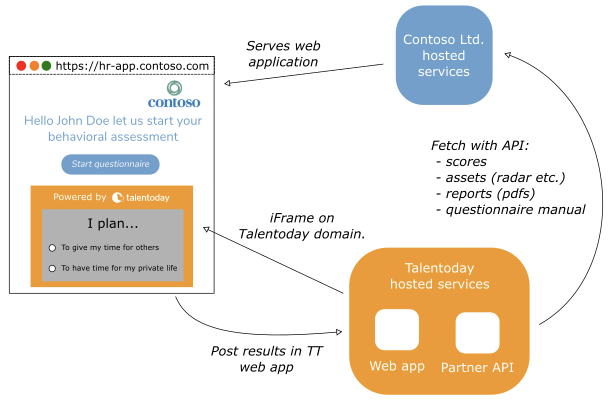
Interested by integrating Talentoday? Email us at contact@talentoday.com
Replacing an employee costs you 9 months of their salary
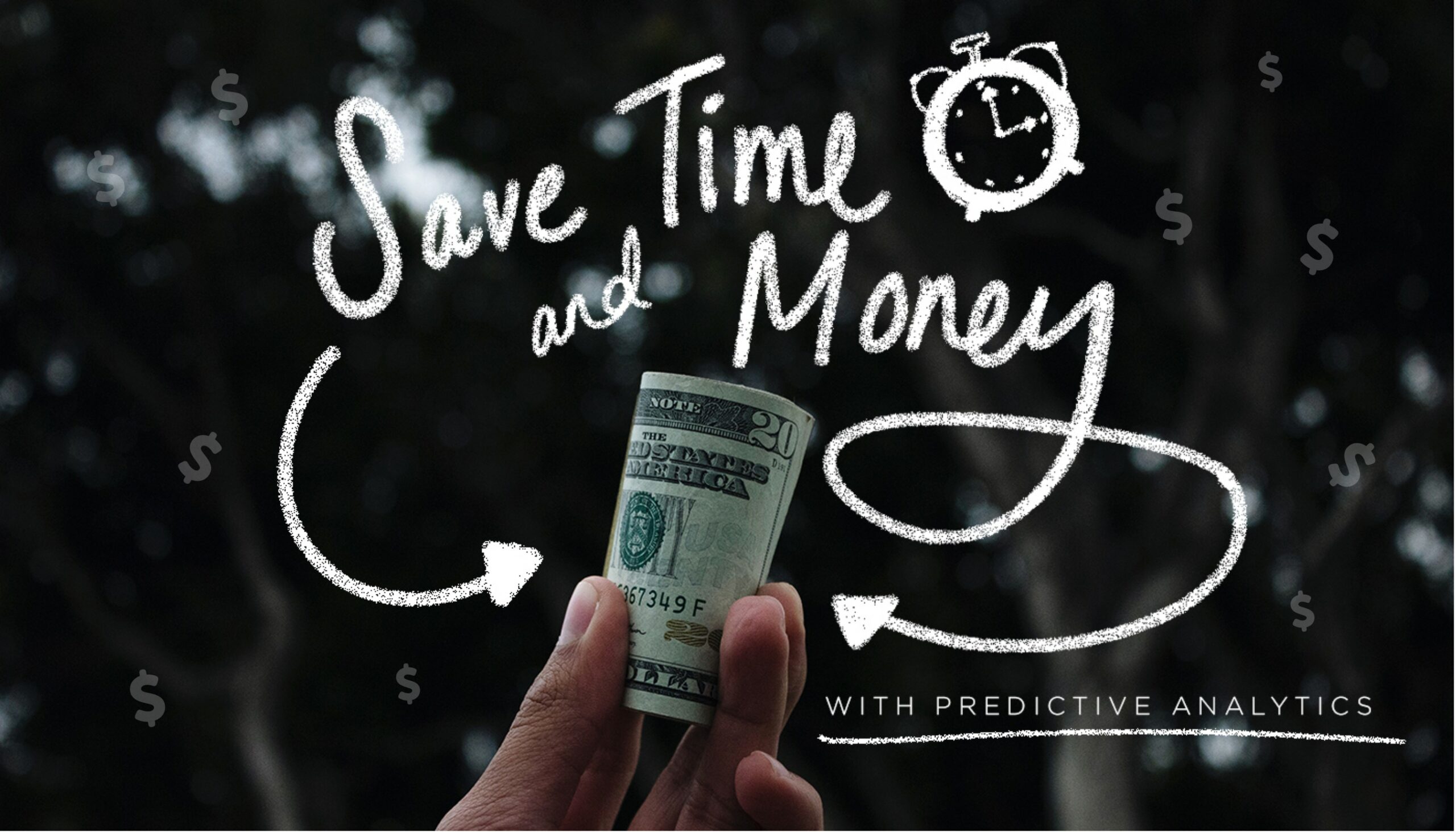
According to Zane Benefits, every time a business replaces a salaried employee, it costs 6 to 9 months of that person’s salary in recruiting and training costs. One way to lessen turnover (as well as save time and money!) is to use predictive analytics in assessing candidates during the hiring process.
Predictive analytics uses data to forecast future results. Forbes explains that companies have used predictive analytics to “predict trends, understand customers, improve business performance, drive strategic decision-making and predict (consumer) behavior”. Companies use this data to increase sales and decide on new products to develop, but they can also use predictive analytics in the hiring process. This type of data is key to understanding the personality traits and behavior profile of a potential employee, ensuring the candidate will be a long-term match for the company.
A study by Cornell University identified what traits should be reviewed using predictive analytics for recruiting executives in particular. They looked at two types of behavior orientations: resource-problem solving oriented and people-oriented. “The research found that the former group was key in predicting initial performance while the latter group was a more accurate predictor of future performance trends.”
In 2012, Wells Fargo started implementing predictive analytics for screening employees prior to hiring. By 2015, they screened over two million people and reported to Predictive Analytics Times that after studying retention rates, “teller retention improved by 15% and personal banker retention improved by 12%”.
While the need for predictive candidate assessments is critical, setting one up from scratch can cost up to $10,000 and take hours to administer! The good news for businesses of all sizes is that technology has evolved so that recruiters and Human Resource Managers can test thousands of people in only fifteen minutes for a small price per month by using a service like Talentoday Manager.
Talentoday can predict an individual’s behavior in the following categories: teamwork, ability to take initiative, management style, ability to handle pressure, reasoning style, communication style, and flexibility. Below is an example of a marketing specialist named Alex. Alex’s assessment shows that stressful situations energize her, and that under pressure, she’ll be motivated rather than put off by challenges.
An employer is never going to change an employee’s personality traits, but behaviors can be taught. Tools like Talentoday’s use objective, psychology-based screenings to provide employers critical information on candidates’ personalities and motivations. In this way recruiters and talent managers can best predict a candidate who will thrive in a particular role, and what training a great candidate might need to fill the gap to ensure long-term success.
Curious about how analytics can save you time? Start your free trial today and use predictive analytics to make smart hiring decisions. And if you like this post, please hit the ❤️ button below or give me a shout on Twitter.
6 Qualities Every Start-Up Employee Should Have
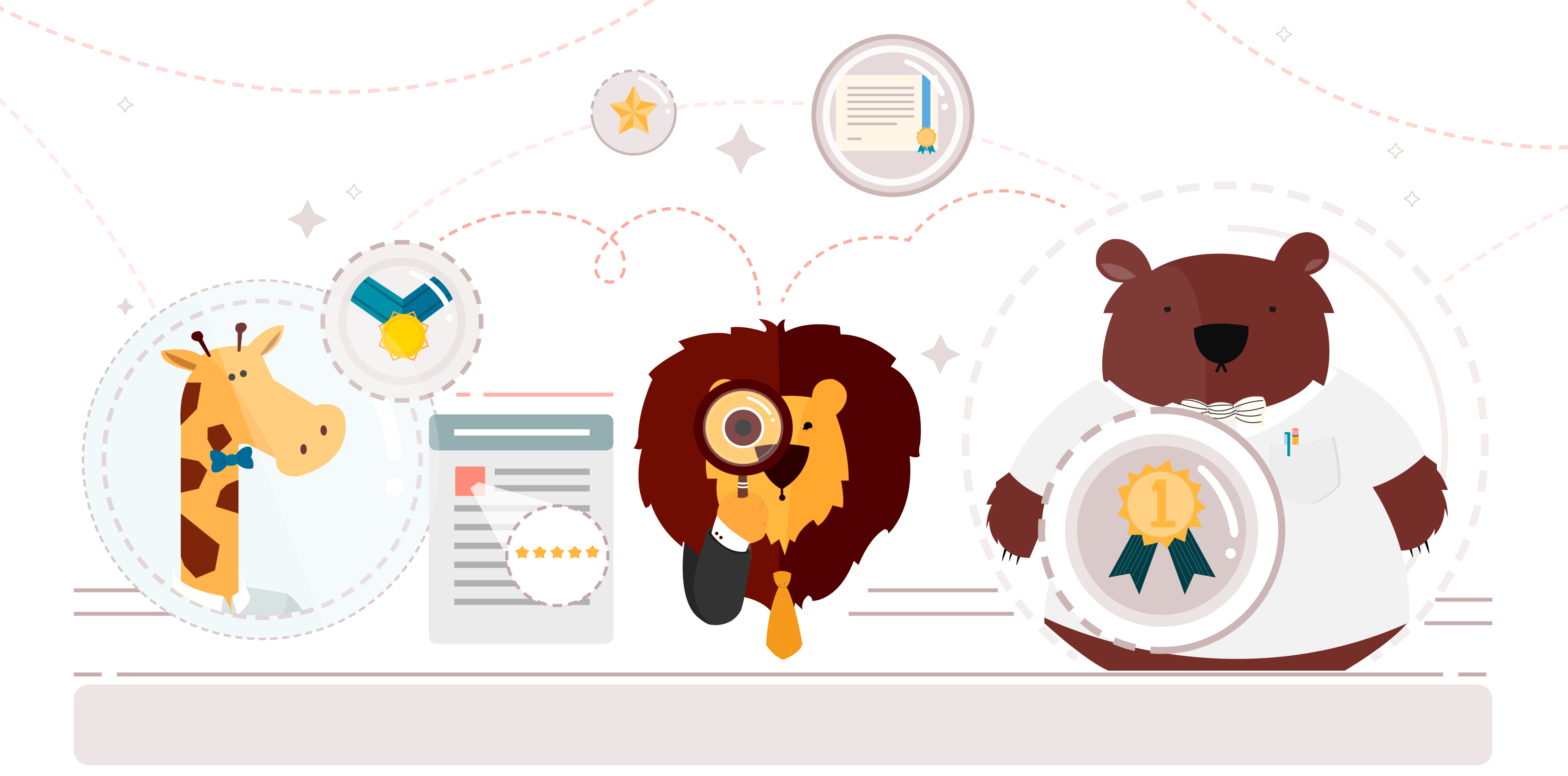
Is your start up hiring? Make sure you do your homework.
Whether your company has been around for one month or one hundred years, when you’re expanding into a new market, you have to hire with a start-up mentality. Hiring is an incredible opportunity, but it’s also a risk. As a start-up, you have fewer resources, so if a new hire doesn’t work out, it causes significant burden to the rest of the team. And if you’re managing a new team from a distance, the stakes are even higher. No pressure, but who you hire can make or break your start-up’s success!
Start-ups have a unique dynamic, and not everyone is well suited for it. It might be enticing to hire a seasoned professional from a big name company, but be careful. They may experience culture shock when they don’t have as many resources or a large team to take care of tasks for them.
Interviewing is obviously the biggest tool recruiters currently use to find the right fit for a team. Interviewing candidates is an art, both from the interviewer and the interviewee standpoints. Some candidates are great at selling themselves, others more reserved. It could be they grew up in a culture where self-promotion was considered a vice, not a virtue, and not indicative of how well they’d perform in a role. Some recruiters are better than others at bringing out the best in candidates in a conversation.
So how do you know if a candidate will fly or flounder in your company’s entrepreneurial culture? Look for these traits:
- Accountability: Determine how the candidate owns his or her work. Notice if he or she answers questions with “I” or “We”. It’s imperative in a start-up that employees take full responsibility for their roles, tasks and actions.
- Self-motivation: In a start-up you don’t have as much time for rah-rah speeches and trying to light a fire under your team. You need an employee who has an intrinsic desire to work hard and perform well.
- Flexibility: One day the goal might be sales, the next traffic. Mission statements and organization charts evolve quickly. To succeed in a start-up, one must be able to adapt to change.
- Skill/Education: Certainly, having the right skills and education for a role brings results. The closer a candidate matches the expertise you need the less time they’ll need to be trained.
- Passion: Believing in the mission of your company and having a passion for the work you’re doing is key for start-up company employees. It’s what will keep them going in the middle of the night before a big launch.
- Resourceful: An ideal start-up employee knows how to solve problems, often with little resources. Like business Macgyvers, they can make big things happen with Excel and a couple of paper clips.
You don’t have to rely on hours of subjective interviews to figure out if your candidate is “the one.” Identifying a candidate’s personality traits objectively can be done using a people analytics tool like the Talentoday Manager. Here’s an example profile of a real person who is currently successful at a start-up. As you can see, with one glance you can identify areas of strength to match the profile you need.
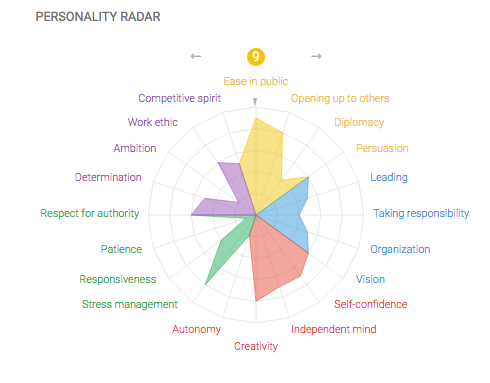
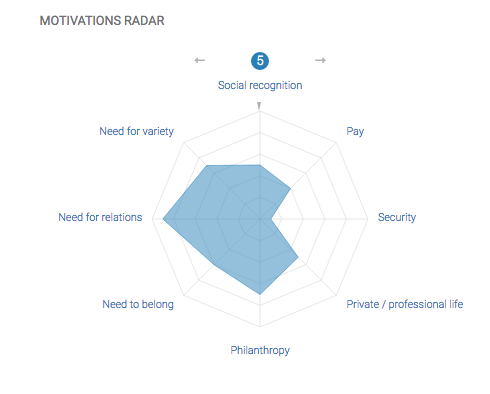
Talentoday further identifies her as a great start-up candidate with these insights:
Creativity 8 / 10: She likes to be innovative and find original solutions. She is not very conventional.
Stress Management 8 / 10: She finds it easy to keep her cool in stressful situations. She performs well under pressure.
Motivations — Security 1 / 10: She does not need security in her work; she likes to take risks.
Motivation — Need for Relations 9 / 10: She is motivated by teamwork and relations with others are very important.
The most important asset a start-up has is its people. When reviewing your candidates, identifying their personality traits is even more important than evaluating their skills. With the right personality traits, an employee can gain experience and move up the ladder, developing into exactly the long-term employee you need.
Curious to find out your professional traits? Check out our page to take your free personality assessment today. And if you like this post, please hit the ❤️ button below or give me a shout on Twitter.
Hit a Hiring Road Block?
3 Powerful Tools for Recruiting the New Generation
This is the era of the Millennials, a generation that, according to the United States Census Bureau, represents more than one quarter of the United States population and is the largest population in the United States today. Take Google’s headquarters, for example. When you walk onto the campus the first thing you see are young adults bustling between the buildings. It looks almost like a busy college campus.
As more of today’s students graduate and enter the job market, recruiters must learn how to attract them and HR teams want to be sure their new recruits will stay motivated when joining their company’s workforce. If companies want to compete with the Googleplex, they need to make their hiring process more effective and their job offerings more alluring to new hot candidates. The challenge is creating a process that is enticing to the interviewee and informative to the company while still remaining bias free. Hiring a millennial will look much different than hiring from previous generations but luckily there a few nimble start-ups dedicated to making this process a success.
Three Powerhouse Recruitment Tools
While it is the era of Millenials, it is also the era of new tech tools. As the candidate pool has evolved so has the technology. HR teams have adapted the following hiring solutions to their recruitment process to help them make more informed decisions.
- Greenhouse companies like AirBnb, Pinterest & Vimeo have successfully implemented this new software that optimizes the entire recruiting process. With Greenhouse, you can find better candidates, conduct more focused interviews, and organize the recruiting process from start to finish. Experienced interviewers don’t wing it. The interview process should be a powerful marketing tool. You want every candidate to walk out of their interview feeling impressed by your team and excited about your company. Greenhouse provides all the tools you need for powerful, structured interviewing.
- Talentoday is a HR portal where people seeking jobs can take a simple & informative questionnaire that analyzes people’s personality and motivation at work The psychometric technology leverages Talentoday’s growing 3.5 million global database of detailed personality assessments. The companies secret weapon is their job matching platform which allows you to match candidates to Job Profiles in the industry to quickly see if you have a good fit. It has a slick, modern interface and is integrated with social networks such as Facebook, LinkedIn, and Twitter, making it very appealing to this new generation.
- Interviewing.io on the other side of the house is this quickly growing company that allows engineers to skip the bullsh** and get right to the technical stuff. Hiring engineers? You can now talk directly to engineers who’ve been killing it in technical interviews. With their unique approach candidates who do well in practice, get invites to interview anonymously with great companies. That means Millennials can skip right to the technical screen without talking to recruiters, touching their resume, or worrying about bias. If you have the skills you get the job, it is as simple as that.
With these tools, a the recruitment team will be one step ahead for their candidates, providing them job opportunities that better fulfill their needs and life goals, while saving the company precious time with a more effective recruitment process.
Embracing These Modern, Powerful HR Recruitment Software
The population of job applicants is continuously changing and a new generation is entering the workforce with very different expectations and attitudes. HR teams will become better at understanding this evolution and select candidates that better fit their company, or lose top candidates to other companies who are catching on.
“Digitization, social networks, big data, and machine learning are disrupting the staffing and recruitment industry and the future of professionals hinges on the ability to understand, interpret and embrace data” — Alberding Group
Adapting new tools that combine recruitment planning, people analytics, machine learning and the latest advancements in psychology will allow companies to attract new generations of job applicants who will remain productive and committed to their job.
Curious to hear more HR & Recruiting tips? Check out additional articles. And if you like this post, please hit the ❤️ button below or give me a shout on Twitter.
The future of recruiting: how to save time, money & stress.
How to Save Time and Money in the Hiring Process.
On paper, the candidate seemed great. But as you stare across the conference table at his disinterested, glazed expression, you wish you had a Doctor Evil button to press so you could watch his chair get swallowed by the floor. You’re a professional, though, so you finish your interview and politely escort him out after a wasted hour. What went wrong? He seemed amazing from his resume!
The average recruiter spends nearly 40 hours and over $1,000 to hire someone (1). And hiring the wrong person can cost a company more than $50,000 in lost productivity(2)! Companies don’t just have to handle replacement and re-training costs of the employee that didn’t work out, but a mismatched employee will affect the entire team’s morale as they scramble to get that person’s work done. In 2012, 22% of recruiters reported that the reason for their bad hires was because of “insufficient talent intelligence.” Issues and personality traits came out after hiring that the recruiter didn’t expect. Recruiters in today’s fast paced quota-filling atmosphere have a limited amount of time to get to know candidates extremely well. Efficiency is critical.
So how can recruiters speed up the process and hire the right talent the first time? Using psychology-based testing prior to interviews can give recruiters important insight into a candidate’s personality. Most of us at one time or another have taken the old-school, popular “Myers-Briggs” test and gotten the four-letter acronym that “matches” us (a.k.a. tries to fit us into convenient little boxes) — any other ENFJ’s out there? But that test was researched and developed in the 1940’s!
Today, recruiters need to understand what drives today’s workforce, and more importantly what motivates them at work. Instead of being placed in a generic box, recruiters should be able to match candidate’s traits and motivators with the team and the company’s unique culture to see if they will make a good fit.
Using a modern psychology-based tool like Talentoday Manager, that was developed with the traits of today’s workforce and the uniqueness of your company in mind, means you have personalized insights by professional psychologists! Really knowing who your candidate is, what motivates him or her, and how he or she will fit on a team, in a role and at your company — before they even come in to interview — will save countless hours and dollars interviewing, negotiating, and potentially re-hiring
And you won’t need your Doctor Evil button after all.
Want to read more recruiting tips and tricks? Check out my blog page.
Sources:
- GetHired.com as reported on http://theundercoverrecruiter.com/wp-content/uploads/2012/06/how-much-hire-graphic.jpg
- http://www.careerbuilder.com/share/aboutus/pressreleasesdetail.aspx?sd=12/13/2012&id=pr730&ed=12/31/2012


